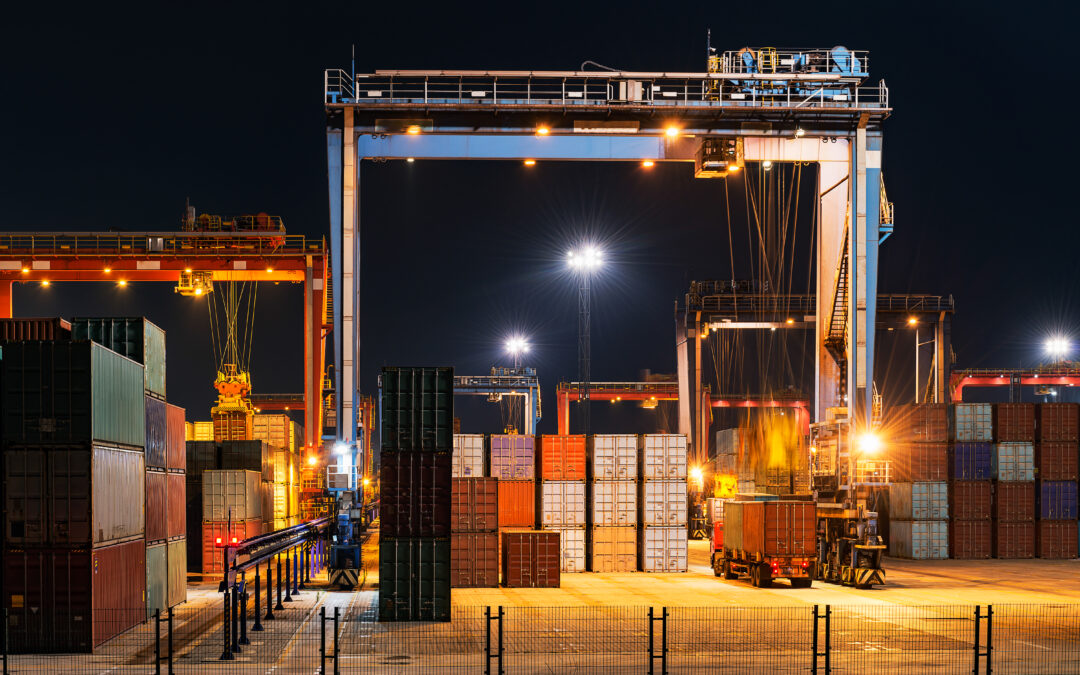In today’s fast-paced global economy, the efficient movement of goods from manufacturers to consumers is more crucial than ever. Distribution centres (DCs) are not just a part of this process; they are the backbone of modern supply chains, making the world of commerce possible. But what exactly are distribution centres, and why are they so important?
A distribution centre is a specialised facility designed to store, process, and distribute goods. Unlike traditional warehouses, which primarily focus on storing products for long periods, distribution centres are optimised for quick inventory turnover. They receive goods from various suppliers, store them temporarily, and then redistribute them to retailers, wholesalers, or directly to consumers.
What is a distribution centre?
A distribution centre (DC) is a pivotal facility in the supply chain designed to facilitate the efficient storage, handling, and redistribution of goods. Unlike traditional warehouses, which primarily serve as long-term storage solutions, distribution centres are optimised for the rapid movement of products from suppliers to their final destinations.
Definition of a Distribution Centre
A distribution centre is a large, strategically located facility where goods are received, temporarily stored, and then shipped to retailers, wholesalers, or directly to consumers. It acts as an intermediary between manufacturers and the market, ensuring that products are available where and when they are needed.
Key Characteristics and Functions
Centralised Hub: Distribution centres serve as central points in the supply chain, consolidating products from various suppliers.
Temporary Storage: While they store goods, they primarily focus on short-term storage to facilitate quick turnover.
Order Fulfilment: Distribution centres are equipped to efficiently pick, pack, and ship orders, often within tight timeframes.
Cross-Docking: This practice involves unloading goods from inbound trucks and loading them directly onto outbound trucks with minimal or no storage in between, streamlining the distribution process.
Role in the Supply Chain
Distribution centres play a crucial role in modern logistics and supply chain management by:
Improving Efficiency: They streamline the movement of goods, reducing the time it takes for products to reach the market.
Enhancing Flexibility: By consolidating products from various suppliers, distribution centres can better respond to fluctuations in demand.
Reducing Costs: Efficient distribution reduces transportation and storage costs, benefiting businesses and consumers.
Supporting E-Commerce: With the rise of online shopping, distribution centres have become essential for handling high volumes of small orders and ensuring fast delivery times.
By understanding distribution centres’ essential functions and importance, we can appreciate how they contribute to the seamless flow of goods in our daily lives. This foundation will help us explore the more nuanced aspects of distribution centres in the subsequent sections.
What is the difference between a warehouse and a distribution centre?
While warehouses and distribution centres are facilities for storing goods, their roles, functions, and operations differ significantly. Understanding these differences is crucial for comprehending how each contributes to the supply chain.
Definition and Purpose of a Warehouse
A warehouse is a large storage facility used primarily for the long-term storage of goods. Businesses utilise warehouses to stockpile products until they are needed, either for manufacturing, distribution, or sale. A warehouse’s main focus is maintaining inventory levels ensuring that products are stored safely and efficiently.
Key Differences in Functionality
Storage Duration
Warehouse: Goods can be stored for extended periods, ranging from weeks to years. The primary function is to hold inventory until it is needed.
Distribution Centre: This centre emphasises quick turnover. Products are stored temporarily, often only for a few days or weeks, before being redistributed.
Order Processing
Warehouse: Limited to basic inventory management tasks, such as receiving, storing, and occasionally picking goods for shipment.
Distribution Centre: This department engages in comprehensive order processing activities, including picking, packing, labelling, and shipping orders efficiently to meet customer demands.
Turnover Rates
Warehouse: Lower turnover rates, as the emphasis is on long-term storage.
Distribution Centre: This centre has high turnover rates, with a constant flow of goods moving in and out to ensure rapid delivery to retailers or consumers.
Daily Routine of a Distribution Centre
Distribution centres (DCs) are dynamic hubs in the supply chain, performing various essential tasks to ensure that goods are efficiently moved from suppliers to customers. Four key activities that highlight their crucial role include shipping, transportation from ports, cross-docking, and quality control.
Shipping
One of the primary functions of a distribution centre is to manage the shipping of goods to their final destinations. This involves:
Order Fulfilment: Receiving orders, picking the appropriate products from storage, and packing them for shipment.
Efficient Dispatch: Coordinating with transportation providers to ensure timely delivery. Distribution centres often use sophisticated software to optimise shipping routes and schedules.
Handling Returns: Managing the reverse logistics process by receiving returned items, inspecting them, and restocking or disposing of them as necessary.
Transportation from Ports
Distribution centres are vital in handling goods transported from international and domestic ports. Key activities include:
Receiving Shipments: Coordinating with port authorities and shipping companies to receive large volumes of goods.
Unloading and Sorting: Efficiently unloading goods from containers, sorting them based on their final destinations or storage requirements.
Customs Clearance: Assisting with the customs clearance process, ensuring all regulatory requirements are met for imported goods.
Temporary Storage: Providing temporary storage for goods until they are ready to be distributed further along the supply chain.
Cross-Docking
Cross-docking is a logistics practice that minimises storage time and accelerates the movement of goods through the distribution centre. It involves:
Direct Transfer: Unloading goods from incoming shipments and immediately loading them onto outbound transportation with little or no storage in between.
Efficiency Gains: Reducing handling and storage costs, speeding up delivery times, and improving supply chain efficiency.
Coordination: Requires precise coordination between inbound and outbound logistics to ensure smooth and timely transfers.
Quality Control
Maintaining high standards of product quality is crucial in distribution centres. This involves:
Inspection: Thoroughly inspecting incoming goods to ensure they meet quality standards and specifications.
Damage Control: Identifying and managing damaged or defective products to prevent them from reaching customers.
Regulatory Compliance: Ensuring all products comply with relevant regulations and safety standards.
Documentation: Keeping detailed records of inspections, product conditions, and any quality issues encountered.
Average Sizes of Distribution Centres
The size of distribution centres can vary widely based on several factors, such as the type of goods handled, the volume of operations, and geographic location. Based on the information from James Kemball’s container storage services, let’s explore distribution centres’ typical size and capacity.
Typical Size Range
Average Size: Distribution centres commonly range from 300,000 to over 1 million square feet. This size allows them to handle large goods and accommodate various logistics operations efficiently.
Specific Examples: James Kemball’s facilities offer up to 650,000 square feet of ambient storage and 100,000 square feet of cold storage, illustrating the substantial space required to manage diverse types of inventory.
James Kemball sites across the UK, such as in Felixstowe and Southampton, have substantial storage capacities, with over 11,600 TEU (Twenty-Foot Equivalent Unit) container capacity, ensuring they can handle significant volumes of goods for storage and distribution.
Solutions to Overcroweded Distribution Centres
Overcrowded distribution centres pose significant challenges, such as inefficiencies, increased costs, and delays. Here are some effective solutions to mitigate these issues:
Efficient Space Utilisation
Vertical Storage: Implementing vertical storage systems to maximise the use of available space.
Optimised Layouts: Redesigning facility layouts to improve workflow and reduce congestion.
Advanced Inventory Management Systems
Automation: Using automated inventory tracking and management systems to enhance accuracy and speed.
Demand Forecasting: Implementing sophisticated software to predict demand and adjust inventory levels accordingly.
Just-in-Time Inventory Systems
Lean Inventory: Adopting just-in-time inventory practices to minimise excess stock and reduce storage requirements.
Supplier Coordination: Enhancing coordination with suppliers to ensure timely deliveries that align with demand.
Expanding Physical Space
Facility Expansion: Investing in expanding existing facilities to accommodate growing volumes.
New Centres: Establishing additional distribution centres in strategic locations to distribute the load and improve service levels.

